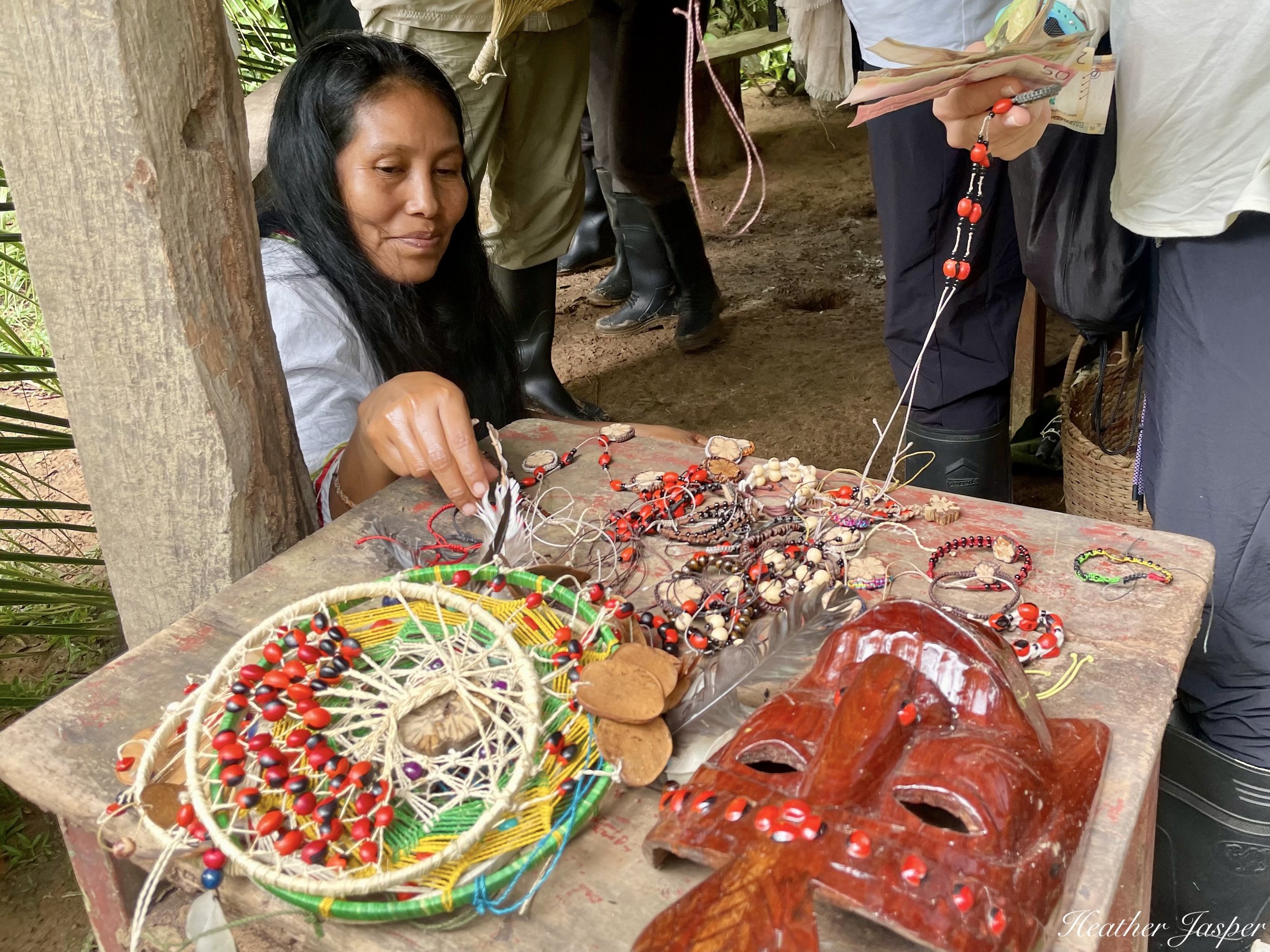Travel Tip 36
3 tips for keeping your spending local.
Handmade souvenirs like these in Ollantaytambo, Peru are a great way to support local artists.
You’ve picked a dream destination. Now how do you ensure your trip benefits the people who live there?
Think about what you spend money on most. It’s probably transportation, lodging, food, experiences, and souvenirs. Here’s my top three tips for how to support local businesses for those expenses.
Another benefit to buying handmade souvenirs is often you get to see how they're made. In the Peruvian Amazon, people use palm fibers and natural dyes to make everything from baskets to butterflies.
1. Don’t book everything before you arrive.
I love trip planning and it’s sometimes hard to refrain from booking everything as soon as I buy the plane ticket. However, it’s the big companies, (often international corporations), that have the flashy websites that rank high on searches. Local, family businesses may give you just as great an experience, or better, but might not have a website that’s easy to find, or any website at all.
For accommodation, book the first night or two but consider leaving other nights unplanned. I use Booking.com because I pay when I arrive and it’s easy to find locally-owned places. After you arrive, check out the city and see if there are any family-run hotels or hostels that you wouldn’t have found online. However, do your research first because this doesn’t work everywhere. If you’re going to Paris in May or Madrid in June, it might be really hard to find a place to stay last minute like that. (This is another benefit to traveling in the off season. More on that in another newsletter).
This also applies to tours and experiences. Many local guides or local companies might be hard to find online. If you can make time in your first couple days in a location, plan to visit the area of town that has most or lots of tour agencies. You can still research them and ask if they can show you reviews from past clients. This works best if you can take the time to look for a local company and don’t have a tight schedule.
The easiest way to keep your spending local is to eat at independent restaurants like Sakana Cevisushi, in Cusco, Peru.
2. Be adventurous in what you eat.
Eating at family-owned restaurants and at markets is the best way to both experience local culture and buy from local families. Those are often my favorite experiences during my travels, and my most memorable. The soups in Vietnam, eggplant-based dishes in Istanbul, tajines in Morocco, pastries in France and ceviche in Peru are the sources of some of my best memories.
As a pescatarian, I’m not a particularly adventurous eater in many parts of the world. Still, I believe there are always local dishes you can try, whatever your dietary restrictions.
Travel can be exhausting and sometimes you just want to eat something familiar. I’ve been there. I’ll admit I went to McDonalds for a vanilla milkshake in Marrakech. Still, that’s something I save for last resort.
Another benefit of buying handmade souvenirs is that you often get to buy directly from the artist, like here in the Peruvian Amazon.
3. Ask locals what they love about the place you’re visiting.
No matter where you go, if you take the time to talk with local people, they’ll tell you about places that you won’t have found online or in brochures. There are markets, waterfalls, churches or temples, lakes, museums and so much more that only local people know about.
When you’re planning something on the fly, you’ll inevitably be spending your money on local transport, local guides, local accommodations, and food, and probably have the opportunity to buy locally made souvenirs.
Put at least one day in your travel schedule that doesn’t have anything planned. Put in a week if you can. Plan some time for these hidden gems. The stories you’ll go home with will be more than worth it.
Got more ideas about how to keep your spending local? Leave me comments below!
These Inca stairs are just one of many wonders on the Piso de Valle trail that’s still closed to the public.
Blog
Another Inca Trail: The Piso de Valle Trail
The famous Machu Picchu is only one of hundreds of archeological sites in the Machu Picchu Historic Sanctuary. “The Inca Trail” as it’s marketed to tourists, is only 39km in an estimated 400km of trails throughout the Historic Sanctuary. Last week I was so lucky to go with a group of Peruvian guides and archeologists on another section of trail that is currently closed to tourists. Click on the blog title above to see what amazing Inca ruins I saw and why I think it should be open to tourism.
Article
Keeping your spending local doesn’t mean staying in cheap hostels. There are plenty of top hotels around the world that aren’t part of international chains. Aranwa is one of my favorite independent hotels in Cusco and the company’s only other hotel in the Sacred Valley is even more luxurious!








